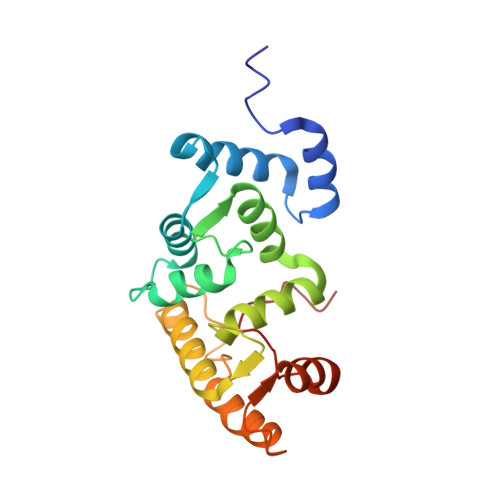The C-terminal tail of human neuronal calcium sensor 1 regulates the conformational stability of the ca(2+)-activated state.
Heidarsson, P.O., Bjerrum-Bohr, I.J., Jensen, G.A., Pongs, O., Finn, B.E., Poulsen, F.M., Kragelund, B.B.(2012) J Mol Biology 417: 51-64
- PubMed: 22227393
- DOI: https://doi.org/10.1016/j.jmb.2011.12.049
- Primary Citation of Related Structures:
2LCP - PubMed Abstract:
Neuronal calcium sensor 1 (NCS-1) and orthologs are expressed in all organisms from yeast to humans. In the latter, NCS-1 plays an important role in neurotransmitter release and interacts with a plethora of binding partners mostly through a large solvent-exposed hydrophobic crevice. The structural basis behind the multispecific binding profile is not understood. To begin to address this, we applied NMR spectroscopy to determine the solution structure of calcium-bound human NCS-1. The structure in solution demonstrates interdomain flexibility and, in the absence of a binding partner, the C-terminal tail residues occupy the hydrophobic crevice as a ligand mimic. A variant with a C-terminal tail deletion shows lack of a defined structure but maintained cooperative unfolding and dramatically reduced global stability. The results suggest that the C-terminal tail is important for regulating the conformational stability of the Ca(2+)-activated state. Furthermore, a single amino acid mutation that was recently diagnosed in a patient with autistic spectrum disorder was seen to affect the C-terminal tail and binding crevice in NCS-1.
- Structural Biology and NMR Laboratory, Department of Biology, University of Copenhagen, Ole Maaløes Vej 5, DK-2200 Copenhagen, Denmark.
Organizational Affiliation:

















